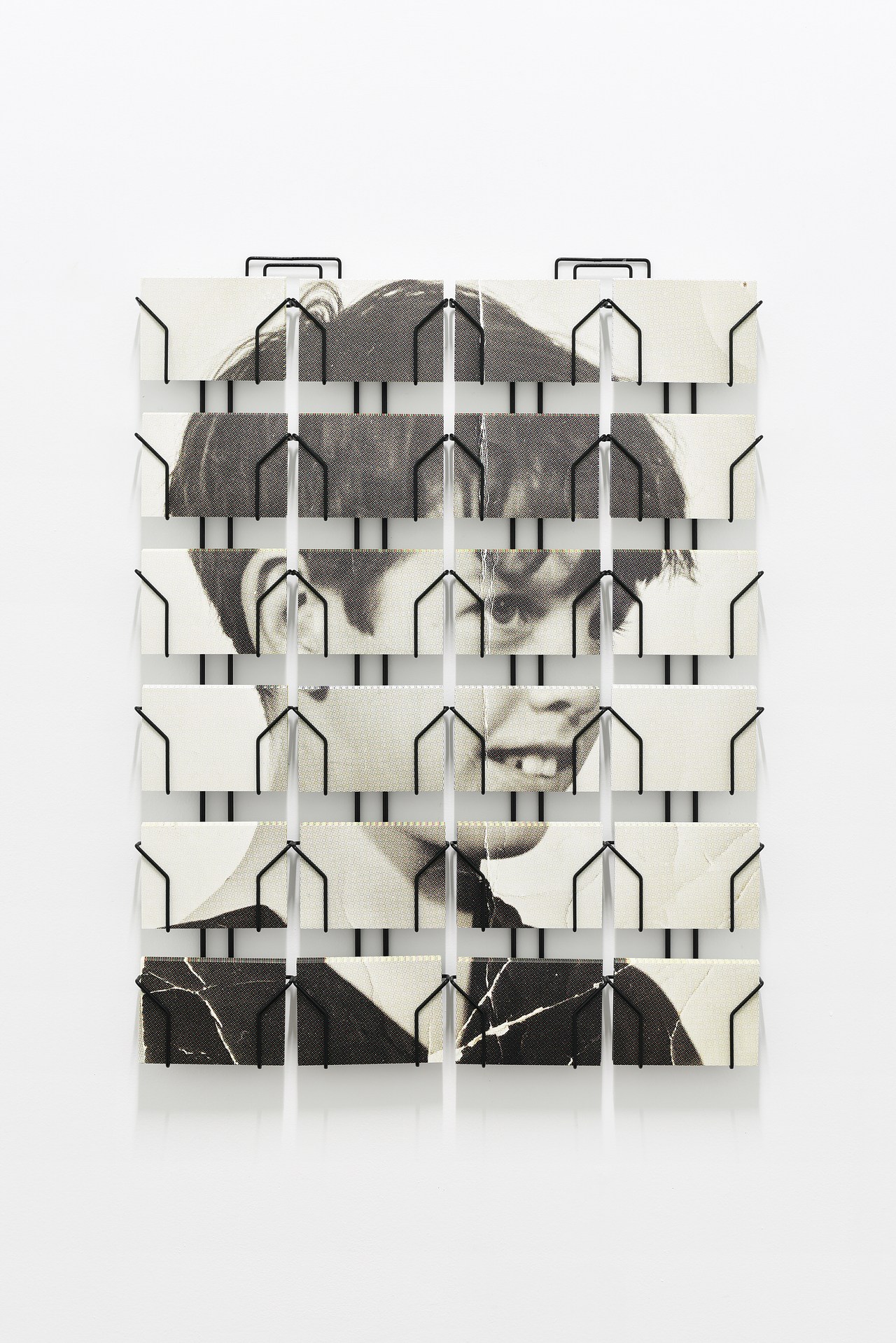After the Archive Collections Room
2009 - Painting (Painting)
12 x 18 cm
Andrew Grassie
In 2008, Grassie was invited by the Whitechapel Gallery to document the transformation of some of its spaces. The artist chose to depict the space before and after, thus creating the series titled “After the Archive Collections Room.” This group of paintings displays a space locked into time with its scaffolding and broom exposed, depicted just before an exhibition on a collection of archives.
The hyper-realistic paintings of Andrew Grassie combine know-how and classic technique with a conceptual approach. “Painting as document” as the artist suggests consists of exhibition or studio views that are photographed and maintain their same scale. The question of the exhibition, the choice of works, and their hanging appears central to Andrew Grassie who like a curator creates protocols to create his series. In “Group Show” (2003), he assembles a group of works, photographs them one by one, and uses the photographic support putting as a matrix for further paintings. The exhibition only exists through this final painting, like in his other project “Tate New Hang” (2004-05) which shows points of view of the hanging of the collection, later to be realized to be in painting. The paintings are hung in the location suggested by the terms described. Andrew Grassie was born in 1966 in Edinburgh, UK. He lives and works in London.
Colors:
Other related works, blended automatically

© » KADIST
Ian Breakwell
2008“BC/AD” (Before Cancer, After Diagnoses) is a video of photographs of the artist’s face dating from early childhood to the month before he died, accompanied by the last diary entries he wrote from April 2004 to July 2005 (entitled “50 Reasons for Getting Out of Bed”), from the period from when he lost his voice, thinking he had laryngitis, through the moment he was diagnosed with lung cancer and the subsequent treatment that was ultimately, ineffective...

© » KADIST
Martin Creed
2003This photograph of Martin Creed himself was used as the invitation card for a fundraising auction of works on paper at Christie’s South Kensington in support of Camden Arts Centre’s first year in a refurbished building in 2005...

© » KADIST
Simon Fujiwara
2016Masks is a series of abstract paintings by Simon Fujiwara that together form a giant, fragmented portrait of German Chancellor Angela Merkel’s face...

© » KADIST
Jeremy Deller
2012Beyond the White Walls , with a commentary written and spoken by Jeremy Deller, is often wryly amusing...

© » KADIST
Simon Starling
2007Invited in 2007 to the Museum Folkwang in Essen (Germany), Simon Starling questioned its history: known for its collections and particularly for its early engagement in favor of modern art (including the acquisition and exhibition of works by Cézanne, Gauguin, Van Gogh, Matisse), then destroyed during the Second World War, the museum was pillaged for its masterpieces of ‘degenerate art’ by the nazis...

© » KADIST
Mark Leckey
2004In Made In Heaven , we are face to face with a sculptural apparition, a divine visitation in the artist’s studio...

© » KADIST
Hans-Peter Feldmann
The types of objects Feldmann is interested in collecting into serial photographic grids or artist’s books are often also found in three dimensional installations...

© » KADIST
Chris Wiley
2012Architectural details become abstracted renderings in Chris Wiley’s inkjet prints 11 and 20 (both 2012)...

© » KADIST
Charles Avery
2012Since 2005, Charles Avery has devoted his practice to the perpetual description of a fictional island...

© » KADIST
Ian Wallace
1986Wallace says of his Heroes in the Street series, “The street is the site, metaphorically as well as in actuality, of all the forces of society and economics imploded upon the individual, who, moving within the dense forest of symbols of the modern city, can achieve the status of the heroic.” The hero in Study for my Heroes in the Street (Stan) is the photoconceptual artist Stan Douglas, who is depicted here (and also included in the Kadist Collection) as an archetypal figure restlessly drifting the streets of the modern world...

© » KADIST
Anthony McCall
1973The film Line Describing a Cone was made in 1973 and it was projected for the first time at Fylkingen (Stockholm) on 30 August of the same year...









